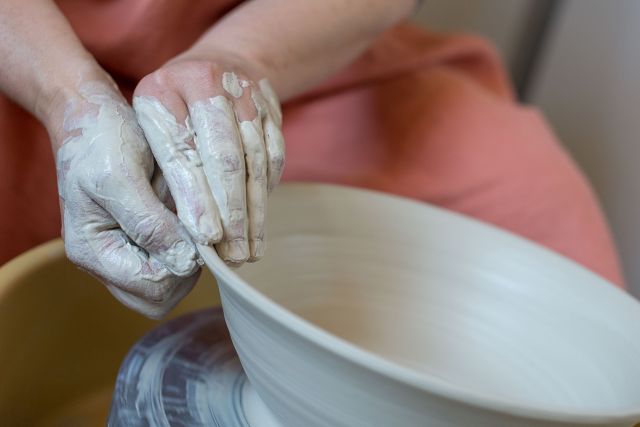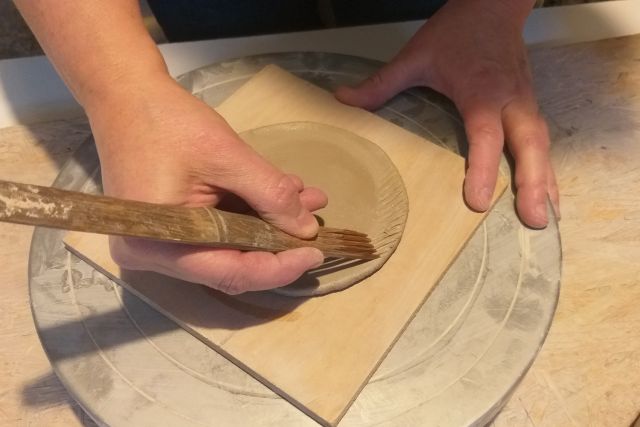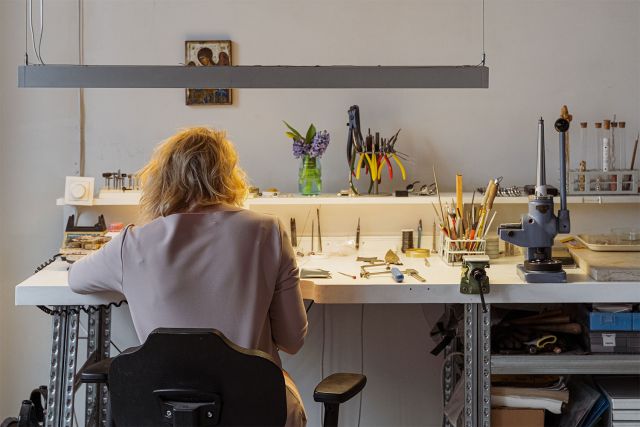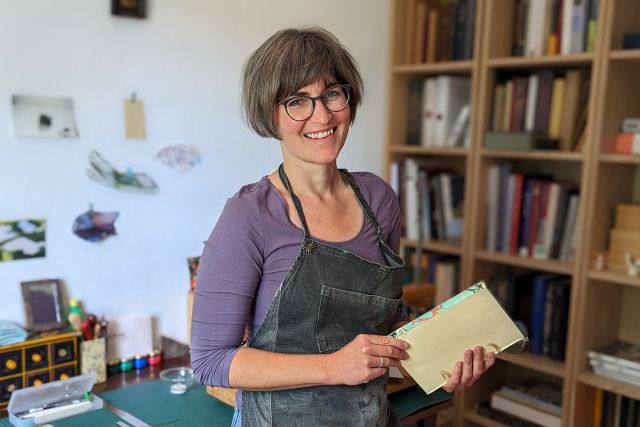This is a ceramic sculpture depicting a human figure in motion, a dancing and juggling joker with a strange hat on his head.
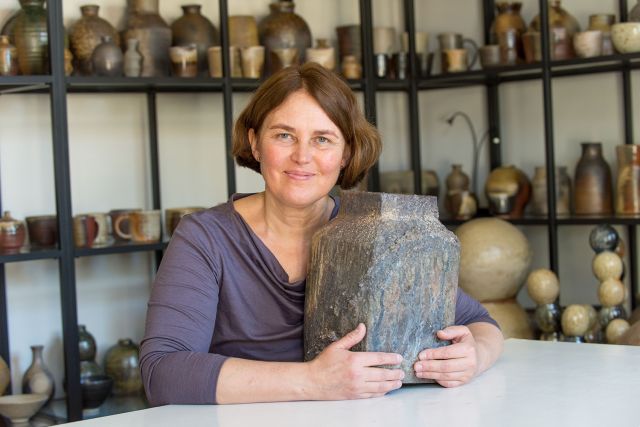
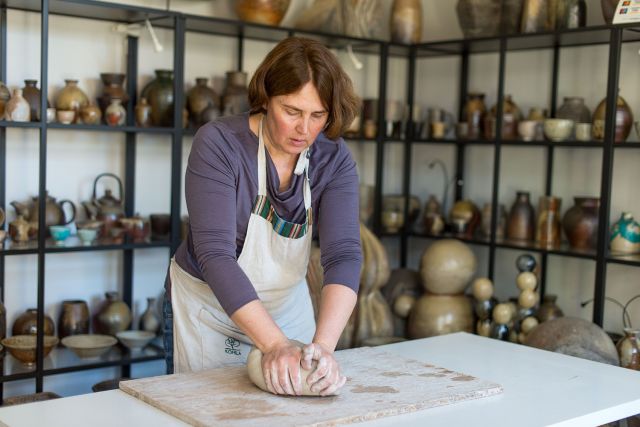
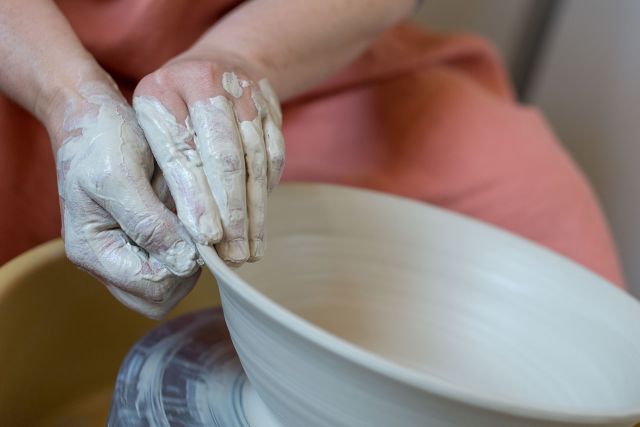
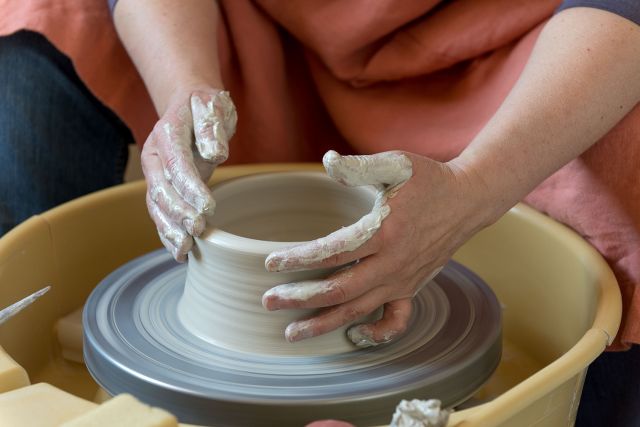
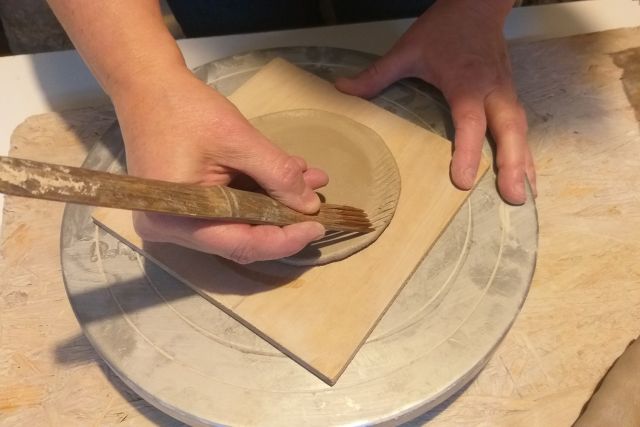
Beatričė Kelerienė
- Anagama
- Ceramicist
- Vilnius, Lithuania
- Master Artisan
By appointment only
+370 619 59106
Beautiful surprises emerge from the kiln
- • Beatričė makes restrained and distinctly subtle ceramics
- • Pottery, for her, is a source of endless surprise and beauty
- • She specialises in anagama
Beatričė Kelerienė’s studio is filled to the brim with countless hazel-coloured cups and vases. They have been fired using a unique and sophisticated technique called anagama. Since 2003, Beatričė has spent time learning this traditional pottery craft in a workshop in Japan, alongside studying and researching traditional kilns. She also set up a pottery studio in Misato. Her ceramics have repeatedly been praised in Japan’s most prestigious pottery competitions. Beatričė's pieces impress with their dignified simplicity. She fires them in a high-temperature wood-burning kiln and glazes them with molten wood ash. Artisans working with anagama have to surrender to the magic of chance, as they never know what the kiln will gift them.
Read the full interviewWorks
Photo: ©Benas Navanglauskas

Photo: ©Benas Navanglauskas
This is a small vase made with an ash glaze and wood-fired at 1300°C. The tradition of ash glazes can be traced back to the Shang period in China (c.1500 BC), and it is thought they were produced accidentally, the result of white-hot wood ash being carried through the kiln with the draft of the fire and settling onto the pots, where the searing white heat melted it into a glaze. Different wood ashes alter the outcome dramatically, making it possible to achieve a wide range of unique finishes. This vase was decorated with a natural ash glaze mixed with oxides for shades.

Photo: ©Benas Navanglauskas
This is an anagama fired bowl. It was thrown on the wheel, out of German clay and black-brown slip, then wood fired in karmazinu anagama for 114 hours. It features a dramatic array of colours and textures, and a rugged surface caused by a sample of anagama reductions.

Photo: ©Benas Navanglauskas
This is an anagama fired bowl that was wood fired in karmazinu anagama for 114 hours. A white and blue slip creates a painted effect on the surface of the vessel. On the sides of the bowl, the outline of a mountain landscape can be seen, but all this is accidental, created during the firing.

Photo: ©Benas Navanglauskas
A chawan, or teabowl, is ideal for drinking matcha tea. The rust-brown texture is made using a black slip.





